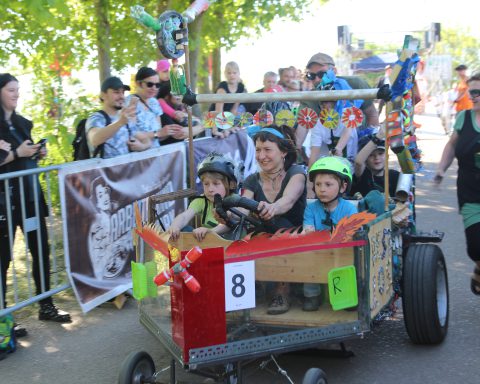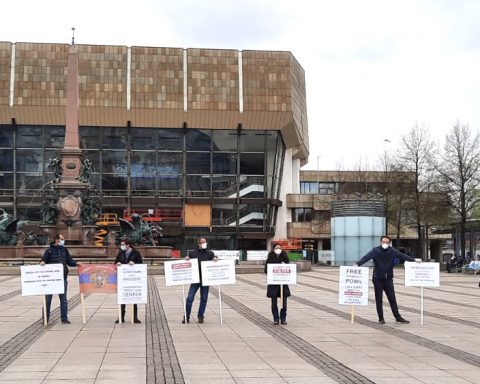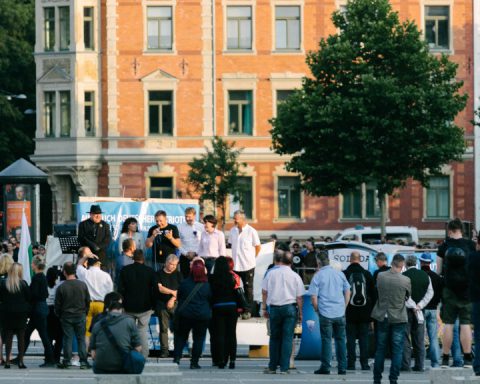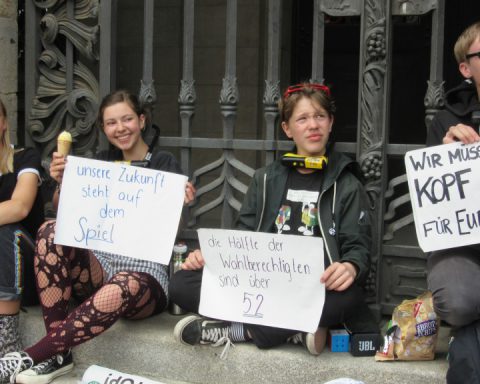An hour and a half away to the south of Leipzig is the Ore Mountain region, known to Germans as the Erzgebirge. Its vast hills and forests are ripe for numerous activities year round – be it skiing in the winter or biking and hiking in the summer. It’s famous for the mining of metals and gems, wood carving (including Christmas pyramids), castles dating back to the 1700s, and lastly, stone arch bridges.
These bridges, big and small, span valleys, creeks and rivers, as well as railways and bike trails. Some even served as entrances to the aforementioned castles, including at Augustusburg, Glauchau, and Posterstein east of Altenburg.
While Saxony has a large number of stone arch bridges, there’s one in particular in this area that has become the focus of preservation attempts: the Bockau Arch Bridge.
Locally known as the Rechenhausbrücke, this bridge spans the Zwickauer Mulde River. The village of Bockau, where it is located, is six kilometers west of Aue and 30 kilometers southwest of Zwickau, the nearest city. While it is in a rural setting, the decision on its future may impact those of other historic bridges in Saxony and beyond.
The Bockau Arch Bridge was built in 1872, replacing a wooden covered bridge dating back to the late 1500s. The structure features a six-span stone arch bridge, made of sandstone and granite mined from the mountains and transported and built using manpower.
The bridge lies just east of the site of the mill / headwaters tenant’s house and dam complex. The house and dam were built in 1559. The canal was added shortly afterwards, to control the flow of water from the Zwickauer Mulde River and provide transportation of materials and wood products to the mills and processors in Aue and Bad Schlema. The tenant’s house was later converted into living quarters for the German Army in World War II, and later into a restaurant that still serves typical regional foods today.
The Bockau Arch Bridge became the site of key events in German and European history.
It was spared demolition in 1945, as one of the soldiers intentionally moved the dynamite to a bridge in Zwickau, allowing the Americans to cross the Bockau bridge. Two weeks later, the Germans surrendered and WWII ended in its European theater.
Twenty-three years later, Soviet troops would cross the bridge on their way to then-Czechoslovakia, to quash the Prague Spring – the plan to marry socialism and capitalism. Before the fall of the Berlin Wall, the bridge would come to be be used by Germans as a key crossing into Prague, in order to escape to West Germany.
While the bridge used to serve the main highway connecting Aue with the Czech border at Klingenthal, it appears its days have been numbered. Since the end of August 2017, the bridge has been closed to all traffic, and work is well underway to build a new bridge on a new alignment. It’s scheduled to be completed by October 2019.
At the same time, the stone arch bridge is scheduled to be removed completely.
These plans have been met with opposition from locals who wish to keep the bridge in service, and reuse it for bike and pedestrian traffic.
This is where the Friends of the Bockau Arch Bridge and this “bridgehunter” come in. We have been pursuing a few actions so far to try to save this historic gem:
- A petition signed by many locals, to persuade the state parliament to reconsider the plan to demolish the stone arch bridge. That was done during the summer of last year.
- The creation of the committee that will work together with interested parties in saving the bridge, including on finding the funding to restore it.
- Making ourselves known to the outside world, through the use of social media and the English-version of a petition that is currently in full gear.
As a result, an important meeting with members of the Saxony State Parliament from Dresden will take place on 24 April at 11:00 am, at the Bockau Arch Bridge. The public is invited to attend.
There, a discussion about the options for the historic stone arch bridge will take place, in hopes of reaching a consensus on its future. At that time, I will present the English version of the petition to the legislators, to make clear that the interest in saving this unique structure goes beyond Saxony and even Germany. As mentioned, the practical aim is to reopen it for traffic, as a crossing for bikes and pedestrians and access between Bockau and Schneeberg.
Also, this should make the Rechenhaus Restaurant attractive again. Currently, due to the bridge’s closing, the restaurant has lost half its regular customers, and is struggling to stay alive during the new bridge project.
So we need your help.
Between now and 24 April, we need your interest and your support in saving the Bockau Arch Bridge, via our active petition. There, you can read more about the bridge’s history and our mission to save it. Sign your name and spread the word to others across the globe.
At the same time, we’re collecting as many likes, stories and photos of the bridge as we can. Visit, like and share the Facebook page “Save the Bockau Arch Bridge.”
The goal is to have as much national and international interest in saving the bridge as possible, in order to convince the state representatives of our cause. A diary on the efforts to save the bridge can be found in the Bridgehunter’s Chronicles, and will also be posted on the “Save the Bockau Arch Bridge” Facebook page as a follow-up.
Your efforts and support will play a key role in the future of this bridge and others in Saxony that are threatened with removal without considering options for restoration and reuse. We thank you for your time and any help you can give.
Cover shot: The Bockau Arch Bridge. Photo © Jason D. Smith








